Michael Kinsley, Free Advice Reader?
Me, on August 27:
A lot of folks are accusing Glenn Beck of trying to “hijack” the legacy of Martin Luther King. (E.g. try this.) But they’re going for the tired old cards of calling him a racist, a divider, etc. Instead they should just say this:
We understand that black Americans don’t “own” the legacy of Dr. King. This isn’t an issue of property rights. Of course Mr. Beck and his fans have every legal right to hold a rally in front of the Lincoln Memorial on the anniversary of the “I Have a Dream” speech.
Nonetheless, we are asking that they hold their rally a few blocks away, and on a different date. There are 364 other days in the year; what’s wrong with them?
…
But this isn’t about logic or rationality. This is about sensitivity to our feelings. Surely Mr. Beck can understand why a majority of American blacks wouldn’t appreciate him holding a rally on the anniversary of Dr. King’s famous speech. If he goes ahead with his plans, he won’t promote racial unity. So we ask him to hold the rally in a different place, on a different date.
Michael Kinsley, August 29:
My first thought, when I heard that Glenn Beck was planning a huge rally at the Washington Mall on the anniversary of Martin Luther King’s “I Have A Dream” speech at the same site 48 years ago was, “How obnoxious. How offensive. What a jerk!” My second thought was, “Well, he’s got a right to speak in that place on that date, as at almost any other place on any other date. Even jerks are protected by the First Amendment.” My third thought was, “Sure, he has the right to have his rally there and then, but shouldn’t he have more sensitivity to those for whom this date and this place have special meaning and importance? Couldn’t he find some other place or pick some other date for his rally?” My fourth thought was, “Uh oh. This line of reasoning is starting to get uncomfortable.”
I’m flattered, Mr. Kinsley, but how ’bout a little somethin’, you know, for the effort?
“That’s My King!” extended cut
On this blog I’ve shown the fairly popular clip that sets some excerpts of S. M. Lockridge’s sermon to music. However, I recently came across the following, which isn’t as polished, but has more from the actual sermon.
History Is a Blank Slate for Austrians and Keynesians
I’m not going to bother reproducing the charts here, but check out this Paul Krugman post. He first shows what Mark Zandi had predicted (before the fact, presumably) about the Obama stimulus package’s contribution to GDP growth, broken down by quarter.
Then, Krugman shows actual GDP growth by quarter.
Krugman claims that the actual performance of GDP matches pretty closely to Zandi’s prediction, give or take a little lag action as you always must do in macro.
The funny thing is, when I first saw the chart, I thought it exhibited a stunning refutation of Zandi.
When I went back and studied the two charts, after a few moments I figured out what the heck Krugman was even thinking. But truly, it took me a while to even understand how he thought the second chart made Zandi look good.
So let me put it this way: What would the second chart have to look like, in order to blow up Zandi? It’s true I can think of a perfect refutation, but if you give me the same amount of wiggle room that Krugman gave himself, then I’m in like Flynn.
In other words, I am claiming that the actual GDP chart is halfway between one that would clearly vindicate the Keynesian prediction, and one that would clearly refute it. But when Krugman and I both saw the chart, we each “saw” what we already “knew” would be there.
Krugman Beats Paulson, Loses to Murphy
Paul Krugman recently patted himself on the back for out-calling investor John Paulson. Krugman quoted from a Business Week article that said on July 1, 2010:
Now [Krugman’s] warnings have taken on an even more dire tone. The threat is not merely the dreaded “double dip.” If the leaders of the developed world hold to pledges they made at the G-20 summit in Toronto and cut government spending, Krugman argues, we face nothing less than a “third depression”—perhaps not as singularly devastating as the Great Depression, which ripped the U.S. economy in half, but comparable to the Long Depression that followed the Panic of 1873, a grinding period of chronic social need and dissension.
If that makes you want to head for the hills with your shotgun and turnip seeds, consider another view, expressed the week prior at the London School of Economics. The speaker was not a decorated academic with visions of 1873, he was a profit seeker, pure and simple: John Paulson, the hedge-fund manager on whose behalf Goldman Sachs (GS) cooked up those killer collateralized debt obligations designed to pay off handsomely in the event of a housing crash. He was right about that one, you’ll recall.
“We’re in the middle of a sustained recovery in the U.S.,” Paulson declared in London. “The risk of a double dip is less than 10 percent.” The housing market is now, he says, an attractive buying opportunity. “It’s the best time to buy a house in America,” he said. “California has been a leading indicator of the housing market, and it turned positive seven months ago. I think we’re about to turn a corner.”
No mention of a third depression.
After quoting the above (but note that I gave you one additional paragraph in the beginning, for more context), Krugman wrote:
So, how’s it going? I’m sure that if Paulson had proved right, there would be a followup article mocking yours truly. Wanna bet that there won’t be a piece saying that maybe professors know something that traders don’t?
That’s probably true, Dr. Krugman. But as the Plutocratic von Pepe reminded me, Krugman’s “third depression” stuff is quite new. Just a year ago, Krugman was telling everyone that we were in a recovery, but that it would be a jobless one. So just another case of Krugman saying 19 different things, such that one of them–when quoted down the road–will make him look prescient.
This issue of Krugman “calling” the fact that we weren’t in a recovery, and in fact were poised on the edge of another depression, is particularly significant to me. Why? Because back on August 21, 2009, I wrote the following blog post:
Two Men Enter, One Man Leaves: More on Krugman vs. Murphy
Now it’s official: Krugman has definitively said we are in a recovery. (In his previous writing, he technically didn’t say we were, just that it seemed as if we were, and if we were it was because of Big Government.)
Now what’s ironic in all this is that even if unemployment is in double digits for 2010 through 2013–which it very well might be–Krugman would actually weasel out of the post I’ve linked to above. He would say, “Yes this is unfolding exactly as I predicted. Real GDP started rising again for a few quarters in the summer of 2009, and I said at the time that it would be a jobless recovery.”
So just to be clear, when I say we are nowhere near coming out of this, I mean it in the same way as an economist speaking in 1932. Yes, the official recession dating of the NBER shows that there were two recessions in the 1930s–one from 1929-1933, and another from 1937-1938.
But c’mon, that’s ridiculous. We all know that “the Great Depression” lasted from 1929 until at least World War II. (And readers of Bob Higgs know that it actually lasted through World War II.)
When it comes to dating business cycles, I am a man of the people. If a tenth of the labor force can’t find work, the economy is broken. Don’t let those MIT economists like Krugman fool you with their fancy jargon.
As General Zod would say, my victory is complete.
Incidentally, I don’t explicitly come out in the above post and say, “This is going to go down as the Second Great Depression,” but I know I’ve said that many times in speeches, and I’m pretty sure I’ve written in, either on this blog or at Mises.org. If anyone can find a quote that would be great.
A Suggestion for the Black Americans Who Don’t Like Beck’s Rally
A lot of folks are accusing Glenn Beck of trying to “hijack” the legacy of Martin Luther King. (E.g. try this.) But they’re going for the tired old cards of calling him a racist, a divider, etc. Instead they should just say this:
We understand that black Americans don’t “own” the legacy of Dr. King. This isn’t an issue of property rights. Of course Mr. Beck and his fans have every legal right to hold a rally in front of the Lincoln Memorial on the anniversary of the “I Have a Dream” speech.
Nonetheless, we are asking that they hold their rally a few blocks away, and on a different date. There are 364 other days in the year; what’s wrong with them?
Now look, we know full well that Mr. Beck and his supporters claim that they are trying to heal racial division. Intellectually, we black Americans know that just because we have been brutalized by angry white conservative males for as long as we can remember, that doesn’t mean that all angry white conservative males pose a threat to our physical safety.
But this isn’t about logic or rationality. This is about sensitivity to our feelings. Surely Mr. Beck can understand why a majority of American blacks wouldn’t appreciate him holding a rally on the anniversary of Dr. King’s famous speech. If he goes ahead with his plans, he won’t promote racial unity. So we ask him to hold the rally in a different place, on a different date.
Ellen Zentner on Marketplace: Fool or Genius?
OK I was originally going to rip apart this analysis (on NPR’s Marketplace) from Ellen Zentner, senior economist at the Bank of Tokyo Mitsubishi:
Chairman Bernanke has come out and specifically said that one of the further measures they could do to get the economy moving was lowering that rate that they pay on excess reserves. That’s the rate that they pay banks in order to hold excess reserves at the Federal Reserve, that by lowering that rate, the idea would be that the banks would then start to lend money. St. Louis Fed President Bullard came out and said absolutely not, that’s a dead[-end] policy and it won’t work. But at the same time, I have to agree with Bullard, because right now, there’s just disincentive for banks to lend when the banks can borrow from the Fed at a quarter percent interest and dump it into treasuries at 2.5 to 3 percent. They get a nice tidy gain, risk-free return. And essentially, it’s been tying up about $1 trillion in available credit. So in a sense, the Fed has been causing part of the problem by leaving rates so low.
Originally, my problem with this statement is that if the banks are buying Treasurys, then they are lending out the money. After all, if Uncle Sam sells you a Treasury, he’s borrowing money, right? So if he’s borrowing, the person on the other end must be…lending.
My other big problem was that I wasn’t sure if Zentner was talking about the fed fund market or the discount window. If the former, then the banks aren’t borrowing from the Fed at all. And if the latter, then the borrowed funds are created out of thin air, so it’s not “typing up credit.”
But then I was really thinking it through, and I got stuck. So now I’m thinking maybe Zentner’s basic point is correct.
Here’s what’s tripping me up: Let’s say you’re a bank and you’ve got $100 million in excess reserves. Normally the bank would make $100 million in new loans to its customers, by opening new checking accounts and magically crediting the accounts with $100 million total in balances. (I explain this magical process here.)
But what if, instead of “lending out” the $100 million in excess reserves in the textbook fashion, instead the bank buys $100 million in a new Treasury auction?
Well, in one sense it shouldn’t affect the analysis. Instead of throwing a new mortgage onto its balance sheet, now the bank throws on some IOUs from the Treasury. And on its liabilities side, the bank has an outstanding claim of $100 million in the form of the check it wrote to Uncle Sam.
But it seems there is something crucially different between the two scenarios. In the textbook case, the money supply (think of M1 or M2) goes up by $100 million in the first round.
Yet in the case of buying Treasuries, I don’t think M1 goes up. It’s not as if the bank opens a checking account and credits the Treasury with $100 million; I think the bank just (effectively) hands over the $100 million in reserves to Uncle Sam, who then spends it until that money quickly finds its way back into the stockpile of excess reserves.
It seems like I’m analyzing this properly, but I have two problems:
(1) What specifically is the difference between the two cases? I’m having a hard time putting my finger on it.
(2) If the first bank can acquire $100 million in Treasury bonds, and that original $100 million ends up back as excess reserves, then why couldn’t the banks eventually buy all the Treasury bonds in the world, with that same $100 million turning over time and again?
…
Ah, OK, I think I’ve figured out what step I’m leaving out. Well, it’s late. I’m not going to change the above. I’m back to thinking Zentner’s analysis is messed up, but since it took me 10 minutes to get it straight myself, we can cut her some slack.
I will end now, and make this post like an Encyclopedia Brown story. “Hey kids, what did Dr. Bob realize about banks investing their excess reserves in U.S. Treasuries?”
A Geek’s Geek
I always thought it was cool when people would refer to somebody as “a comedian’s comedian” or, more generally, “a [member of profession X]’s [member of profession X].” It was almost a non-falsifiable statement; if you said, “What are you talking about? That guy’s not funny at all!” the person could just roll his eyes and say, “Billy Crystal would know what I’m talking about.”
Anyway, I have just earned the title in the title of this post. Let me explain: Scott Sumner has been having a meltdown of sorts now that he’s back from vacation and sees that everybody turned into a deflationist in his absence. (The non-board-certified von Pepe and I have been psychoanalyzing Sumner over email.) Arnold Kling decided to have some fun and posted this brain teaser to trap Scott:
Here is a multi-part question for monetary theorists:
Suppose that the ten-year interest rate on Treasuries is now 2.6 percent.
1. What open market operations would you recommend to try to bring this rate down to 2.5 percent as rapidly as possible?
2. What open market operations would you recommend to try to bring this rate up to 10.6 percent as rapidly as possible?
3. If someone were to recommend for both (1) and (2) open-market purchases of short-term Treasuries with high-powered money (not necessarily in the same amounts or over the same time period), could that be the right answer? Explain why or why not.
In the comments I wrote:
Great question Arnold. I think Scott Sumner’s answer would be that Bernanke should enter the GDP futures markets and, in his best impression of Patrick Stewart, say, “Make it so.”
If you don’t think that was geeky…trust me, Steve Urkel would know what I’m talking about.
You Win Some, You Lose Some: Krugman Lives to Fight Again
I was suspicious when I read this Krugman blog post defending the current near-zero fed funds rate. Krugman used a “Mankiw Rule” (similar to the Taylor Rule) to argue that we weren’t in a bond bubble, because the economy actually “wants” negative nominal rates right now.
Now the Taylor Rule (and related Mankiw Rule) give a quick and dirty guide to how the Fed should set its target interest rate. It’s a tradeoff between price inflation and unemployment. If unemployment is high, the Fed should set a low interest rate, but if price inflation is high, the Fed should set a high interest rate.
I thought I was going to be able to nail Krugman, because during the housing boom years consumer price inflation wasn’t particularly bad. In fact, people were screaming about “deflation” in the early 2000s. So I thought that if I used Krugman’s own numbers, I could “prove” that Alan Greenspan’s Fed wasn’t setting interest rates too low during the housing boom years (because price inflation was tame).
Alas, the numbers didn’t work out for me. Since I obviously am not going to write up a big article saying, “Krugman’s method is a non sequitur, although even it would have known Greenspan was nuts…” I at least thought I should show the results here:

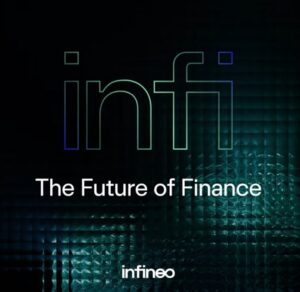
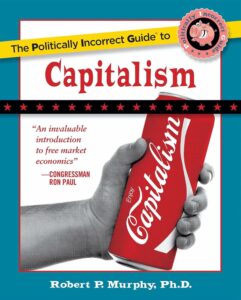
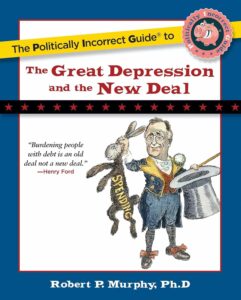
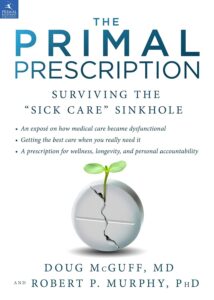
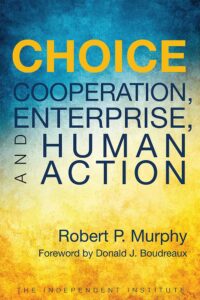
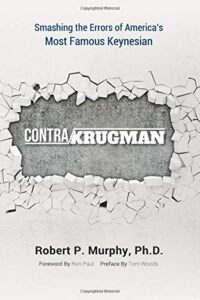
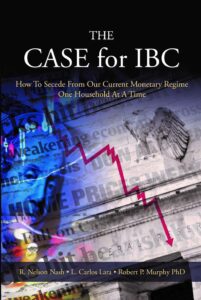
Recent Comments